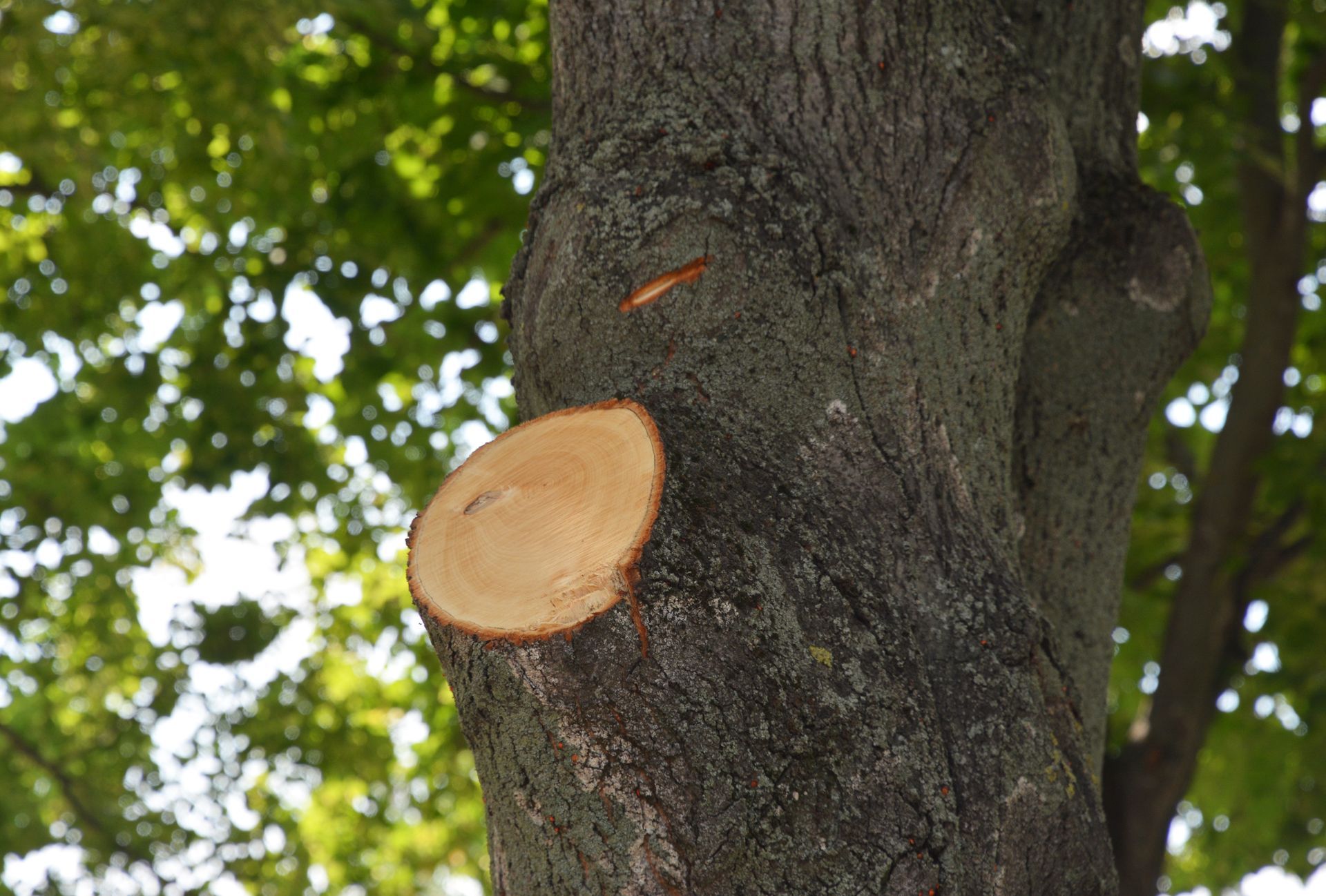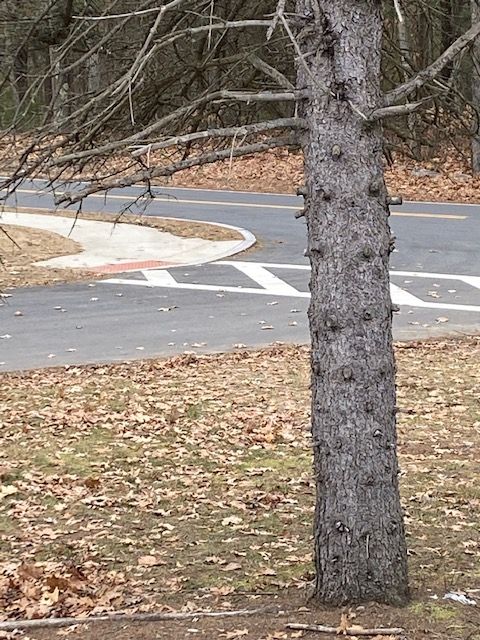Bad Pruning Cuts

Bad pruning cuts are among the top reasons for tree infections and death. Using the wrong pruning tools or not following the proper techniques can eliminate a tree's stored resources, impact its future growth, and pave the way for tree diseases. That's why it's important to know common pruning mistakes and how to avoid them.
Table of Contents
Worst Pruning Mistakes You Can Make
Improper pruning can make a plant vulnerable to various issues, from uneven new growth to pests and insects. If you know about pruning mistakes, you can be wary about them during tree pruning.
No Training
If you don't know how to prune a tree, don't simply pick up a pair of shears and get cutting. You may make wrong pruning cuts, use improper tools, or damage the tree permanently.
Instead, research different tree species to understand their pruning needs. You can use books, online resources, and YouTube tutorials for this.
Some arborists have YouTube channels dedicated to tree maintenance. Many universities with agricultural departments also have online brochures, eBooks, and articles you can use to learn about the proper pruning technique for each tree species.
Topping The Tree
Tree topping means removing large amounts of leaves and branches from a tree's crown, often only leaving the stubs behind. Many people think tree topping is a helpful technique to make a tree smaller.
But that's not true since the tree grows rapidly after topping to replace its lost foliage and limbs. Often, topped trees may not even grow back, resulting in their death.
Since trees rely on their leaves for photosynthesis, removing a tree's foliage means depriving it of its nutrients. The cuts where you've removed the branches also become an entry point for pathogens that cause diseases.
A topped tree can also be unsafe for surrounding areas. For example, its rotten limbs may fall on nearby homes, cars, and roads.
Instead of topping a tree, you should remove some of its branches and foliage. If a tree is becoming too big, remove the parts that are becoming a hazard to nearby infrastructure.
Making Huge Cuts
One of the most common bad pruning examples is cutting branches 4 or more inches in diameter. When you cut these branches, the wound becomes too big to be sealed.
Instead, you should cut a branch with a large diameter back to the trunk so that the branch collar seals the wound. As a homeowner working without any assistance, you should not cut such big branches on your own.
Besides impacting plant growth negatively, this can also become a safety issue. These branches can be pretty heavy and unstable, causing injury and damage if they fall on nearby people or structures.
Removing Branch Collar
The branch collar is the bulbous area attached to a big branch or the trunk. It contains collar tissue, which is rich in chemicals and energy reserves that prevent tree decay and create wound wood to seal off pruning wounds.
If you want a tree to have healthy growth, you should not remove the branch collar since it will strip the tree of necessary nutrients and chemicals. By cutting into the branch collar, you will also interfere with the natural protective mechanism of the tree.
It will affect plant health negatively by allowing pests and diseases to infect the tree. Instead of pruning the branch collar, cut dead limbs and rubbing branches from the tree.
Damaging Bark
When you make a pruning cut, make sure it does not damage the tree's bark. Otherwise, it will weaken the tree's structural integrity and expose it to insect infestation.
Any damage to the bark also affects the cambium, which is the area underneath the bark. A tree's cells divide in this area, resulting in the tree's sideways growth. If the cambium is damaged, the tree will not grow in girth.
Another issue with damaging the bark is that the tree will grow around the wound. That makes it dangerous to cut the tree or trim it down at a later stage.
Over-Pruning
Over-pruning a tree can put your plant under stress since it doesn't have enough branches and foliage to absorb sunlight. If you remove too many fruit branches and vital buds, you can reduce a tree's yield.
Over-pruning also makes a tree more susceptible to environmental damage. After undergoing heavy pruning, a tree will not have the correct moisture levels, temperature regulation, and nutrient reserves to deal with:
- Strong winds
- Drought
- Harsh temperatures
Experts suggest removing only 10% to 20% of a tree's canopy. For larger trees, you can remove end portions of the branches around 1 to 3 inches in diameter. Meanwhile, small and ornamental trees benefit from pruning smaller limbs around 1/4 to 1/2 inches thick.
Using Wrong or Dirty Tools
Both wrong and dirty tools can harm a tree in many ways. You should use sharp pruning tools since they make precise cuts and allow faster wound healing. Blunt tools require you to apply for more, which can exert trauma on the stems, damaging them in the process.
Besides sharpness, it's also vital to ensure you're using the right tool for the job. Some standard pruning tools include hand pruners, hedge shears, loppers, saws, and pole saws.
Similarly, dirty tools facilitate the spread of diseases. For instance, you risk spreading the infection if you do not clean your pruning tools when using them between healthy and diseased trees.
Pruning During the Wrong Season
Pruning a tree during the wrong season can stunt its growth and make it susceptible to pest infections. Early spring or summer is the right time for light pruning.
But if you want to perform heavy pruning, do it when the tree is dormant in late winter before its active growth season begins. The right time to prune also differs across species.
Here are some standard trees and the correct pruning seasons:
- Oak Trees: March through October is the wrong time to prune oaks. Instead, prune oaks during spring or supper.
- Evergreen Trees: Prune evergreen trees, like fir, spruce, and pine, during late winter.
- Spring-Flowering Shrubs: Prune them immediately after they flower, but do it in moderation.
- Summer-Flowering Shrubs: They need pruning in early spring or late winter.
Not Pruning At All
Just like over-pruning, under-pruning, or not pruning your trees at all are harmful to plant growth. If your tree is diseased, you must cut off its infested branches so the infection does not spread to nearby trees.
Likewise, a tree with too many dead or dying branches will not produce fruits or new growth. Removing dead branches will allow the tree to allocate resources for growth and fruit production.
When trees grow too big, they can become a hazard to neighboring infrastructure, such as electrical lines and buildings. Pruning keeps the tree's growth in check to keep everyone out of harm's way.

Proper Pruning Cuts
There are three types of cuts in a proper pruning technique. Here's an overview of them.
Thinning Cuts
A thinning cut is also called a removal cut or a natural target pruning cut. It removes a lateral branch to the trunk or the parent branch.
Although thinning cuts reduce a tree's canopy, they do not impact the height. But thinning will allow more light into the canopy, allowing photosynthesis and growth.
Thinning also reduces the foliage's weight on larger branches. These cuts are ideal in snowy regions where the tree has to bear snow loading in winter. You can use these cuts for structural pruning of shrubs, small trees, and middle-aged trees.
Reduction Cuts
Reduction cuts remove large branches in younger trees. They are used to train a young tree to grow in a specific direction.
Unlike thinning cuts, reducing cuts do not leave a defense zone on the branch. So, the branch cannot protect itself against decay. But this is not an issue in younger trees. That's why reduction cuts are not ideal for mature trees that are more prone to decay.
You should also not use reduction cuts on trees under stress, for example, if they were just transplanted. These cuts can cause the tree's health to decline.
Heading Cuts
A heading cut only removes a branch's growing tip. It helps the side buds grow, creating dense growth at the pruning cut.
Do not use heading cuts on shade trees since they can damage the tree's crown and reduce its natural growth. Instead, you can use a heading cut on shrubs to create a dense outer canopy with a lower, woody base.
Sweet New Earth Final Say on Bad Pruning Cuts
Though there are some ways to rectify badly pruned trees... it is best to be avoided. Bad tree pruning will expose a plant to disease, disrupt its growth, reduce its aesthetic value, and do structural harm. Avoid the mistakes mentioned in this guide to do a good pruning job.
Remember that not all tree species have the same pruning needs. If you haven't found anything in your research, reach out to a local agricultural authority. Or, consult an arborist to learn about the right pruning cuts for your trees.

Carl Anderson
Carl Anderson is an avid outdoorsman with a keen interest in writing about and reviewing tools. He has over 20 years of writing experience and the only time he isn't feverishly typing away at his computer is when he's outside in nature working on his projects. You can learn more about him here.
Join our community!
Join to receive guides, insights, and the latest gardening deals!
